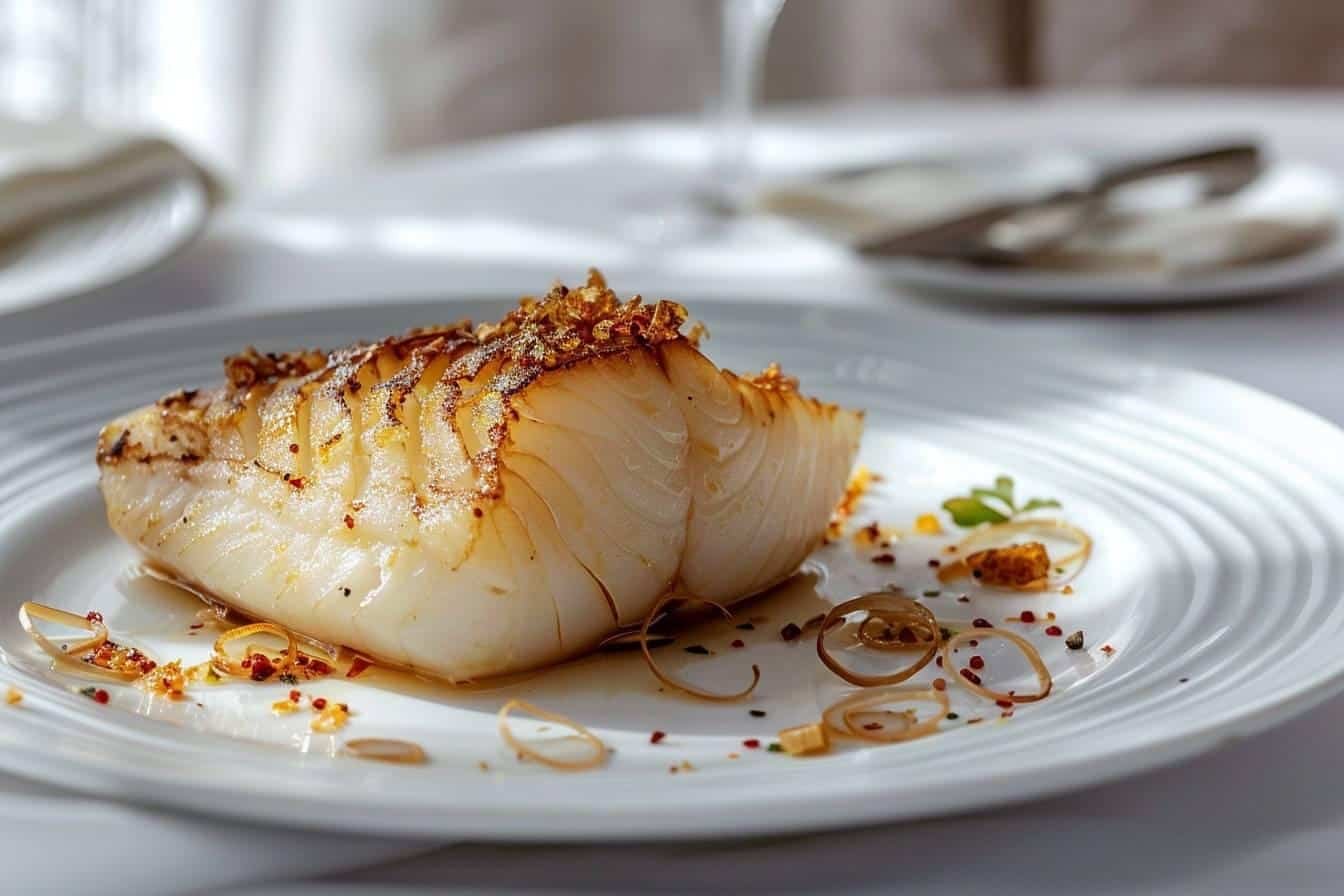The article in brief
Monkfish, a marine delicacy with a host of benefits, stands out for its tasty flesh and nutritional benefits.
- Lean white fish with firm flesh, virtually edge-free
- Rich in B vitamins and essential minerals (phosphorus, magnesium, iodine, iron)
- Slimming ally with only 0.79% of fat
- Can be cooked in a variety of ways: sautéed, grilled, roasted, en papillote
- Ideal drinking season : October to May
Ah, monkfish! This white fish a captivating treat for gourmets. As a lover of the sea and its treasures, I can't help but get excited at the idea of telling you about this marine delicacy. Let me take you on a journey through the delicious world of monkfish, a fish that really deserves to be discovered.
Characteristics and benefits of monkfish
A white fish with many benefits
Monkfish, also known as anglerfish, is a fish species that lean white fish which is distinguished by its firm, flavoursome flesh. What makes it particularly popular is its almost total absence of bones. In fact, with the exception of a central bone that's easy to remove, monkfish offers a hassle-free eating experience. It's a real pleasure to eat without having to be an expert at removing bones!
Over the years I've worked in aquaculture, I've come to appreciate the nutritional qualities of this fish. Monkfish is a veritable mine of benefits for our bodies. It's packed with B vitamins and essential minerals such as phosphorus, magnesium, iodine and iron. It's as if the sea had concentrated all its goodness in this fish!
A surprising slimming ally
You may not believe it, but monkfish is a real ally for those watching their figure. With its low fat content (just 0.79%), it fits perfectly into a balanced diet. I remember one customer who was delighted to finally be able to enjoy a good fish without feeling guilty. That's the magic of monkfish!
Here is a small table summarising the nutritional values of monkfish per 100g:
| Nutrient | Value |
|---|---|
| Calories | 70 kcal |
| Proteins | 16,7g |
| Lipids | 0,2g |
| Cholesterol | 44.1mg |
Where and when to find the best monkfish
If you're wondering where to find this marine treasure, you should know that monkfish is caught mainly in the north-east Atlantic, the English Channel, the Bay of Biscay and the Mediterranean. To enjoy monkfish at its best, I recommend eating it between October and May. This is when the meat is at its tastiest. A little professional tip: don't hesitate to ask your fishmonger for advice, he'll be able to guide you towards the best cuts!
The art of cooking monkfish
Preparation and cooking
Monkfish is a fish that lends itself to a wide range of culinary preparations. It is generally found in tail, fillet or medallion form. One thing to bear in mind is that its flesh tends to shrink and give off water when cooked. But don't worry, this is perfectly normal!
For perfect cooking, I recommend you follow this golden rule: 10 minutes on a low heat. This is the secret to keeping the meat tender and tasty. I learnt this trick from an old fisherman, and believe me, it makes all the difference!
Here are some cooking methods you can try:
- Sautéed in a pan
- Grilled on skewers
- Oven-roasted
- En papillote
- Steaming
- Pochée
Recipes and side dishes
Monkfish goes wonderfully well with a multitude of ingredients. Shallots, garlic, tomatoes, white wine and cream are the perfect accompaniments to enhance its flavour. If you want to impress your guests, try flambéing it with cognac or white wine. The effect is guaranteed!
Classic recipes include monkfish Armorican style and monkfish American style. These dishes are veritable institutions of French cuisine. Rice, mixed vegetables and potatoes are the best accompaniments.
A little personal anecdote: at a dinner party with friends, I prepared a monkfish in shallot sauce. It was such a success that my guests asked me for the recipe on the spot! That just goes to show how much of a sensation this fish can be at the table.

Tips and advice to bring out the best in your monkfish
Choice and conservation
When you buy monkfish, make sure the flesh is firm and does not give off an unpleasant odour. If you opt for fillets or medallions, check that they are white and pearly. The best way to preserve it is to eat it within 24 hours of purchase. If this is not possible, place it in the coldest part of your fridge, wrapped in cling film.
A little professional advice: if you're lucky enough to find whole monkfish, ask your fishmonger to prepare it for you. It's a fish that can be a bit intimidating to prepare yourself the first time!
Original taste combinations
Don't be afraid to experiment with monkfish! Its firm flesh and delicate flavour go surprisingly well with bold ingredients. Why not try monkfish with curry? Or a monkfish with citrus fruit? Personally, I love preparing it with a saffron sauce - it's a real treat for the taste buds!
If you're a seafood lover, monkfish goes wonderfully well with oysters and mussels. It's a combination that I discovered on a trip to Brittany and can only recommend to you.
The last word
Monkfish really is an extraordinary fish that deserves its place on our tables. Easy to prepare, delicious and healthy, monkfish has it all. So don't hesitate, embark on the culinary adventure of monkfish! And who knows, maybe you'll become as passionate about this wonderful fish as I am! white fish.
Speaking of a passion for fish, if you're curious to discover other captivating species, I invite you to find out more about the pompom fish. This colourful little fish is sure to brighten up your aquarium!
Remember, cooking is all about pleasure and sharing. So have fun, experiment, and above all, enjoy monkfish!
